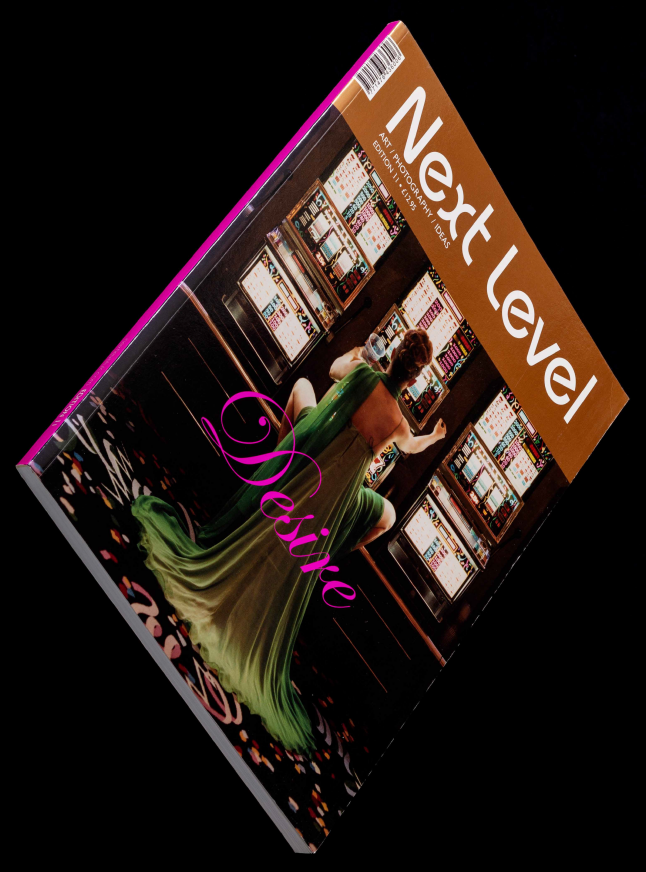Lijie LiuAnother Episode

Introduction by Another Episode
Can photographs reflect our youth?
Each photograph is another episode, perhaps just for me, or for many. Our youth has gone dry, like green moss under the sunshine, at the meeting point between reality and wonderland. Another Episode is a small album, drowning in sentimental memory and dream. The individual’s lifetime is exposed, without shelter. Time grows blurred, but space becomes surreal when I start looking back. Youth passes quickly, only leaving broken pieces of the experiences with life, death and feeling in my hands. The layers of life are revealed, one by one, explored, walked through with born sensitivity.
That lost in the dark, ‘me’, that hugging the broken doll, ‘me’… I embark upon the soon departing and the long gone. What I feel as real in my heart is true reality, regardless of any other ‘reality’.
Re-inventing the past.
My granddaughter is only four years old. While visiting us, she announced that she fell in love… with the main lighthouse at the western tip of the island. After feeling puzzled, I realized how phallic and majestic this structure really is. It threatens while soaring against the clouds, and guides the ships safe. Can a four-year-old fall for a penis? This started me thinking about imagination and its representation in contemporary photography.
Chinese artists have an edge that we, Westerners, have not encountered since the late 1960s or 1970s, for a simple reason. They have been deprived of a form of freedom just like we were after the Second World War. At the time, reconstruction was paramount; freedom would come later. Then 1968 happened, in the US and in Europe as well. For the Chinese, opening up has been edging closer since the mid-1980s, with a typical communist political see-saw that saw Tian An Men ‘89 against the late 1990s blossoming in contemporary art with the emergence of the new urban middle class. In China today, the visual artists and especially the photographers and video-makers have grasped and assimilated the conceptual grammar of Western contemporary art. While using its somewhat bland appearance and slick surface to express their fear and loathing at the prevailing system, contemporary Chinese artists also manage to reflect on their tremendous art history and cultural background, reinterpreting the official media’s grammar to question a future often seen as threatening because it is uncertain, if not unknown.
In this context, the self-portrait is rare. As a genre, the portrait is not part of China’s art historical legacy. Monica Dematte, an Italian curator and a specialist in Chinese contemporary art, has been considering the question of self-portraiture with regard to Chinese artists, interrogating their own ways of looking at self-representation. Few of them use their own image to tell their stories. Liu Lijie in this respect stands alone. This young artist works within a different tradition – one which has been paved by artists such as Duane Michaels and Les Krims, as well as others like Sandy Skoglund and Sarah Moon, whose use of the language of surrealism and dream in their work has been widely influential in contemporary Chinese art.
Liu Lijie takes us through her dreams and fears through the power of photography. While looking at images, we often have to begin with reality, photography’s starting point. In her images, the artist plays with our imagination on many levels. On one we are asked to consider the contradiction between the subject’s age and the childish setting, but we are given some clues through the use of Western objects in the composition. TV, bicycle, dolls, coke and french fries: none of them were available when she was a child, least of all, the pretty angel symbol, far from traditional Chinese religion. In China, like in most puritan societies, desire and philosophy, and fear and sexuality, clash and interfere. Artists looking at themselves help open our minds by evoking personal fears and expressing the questions that cannot be formulated in a stereotyped world governed by the mass media. Liu Lijie does this with the simple photographic vocabulary that we as European, American, African or Chinese can all relate to and understand.
